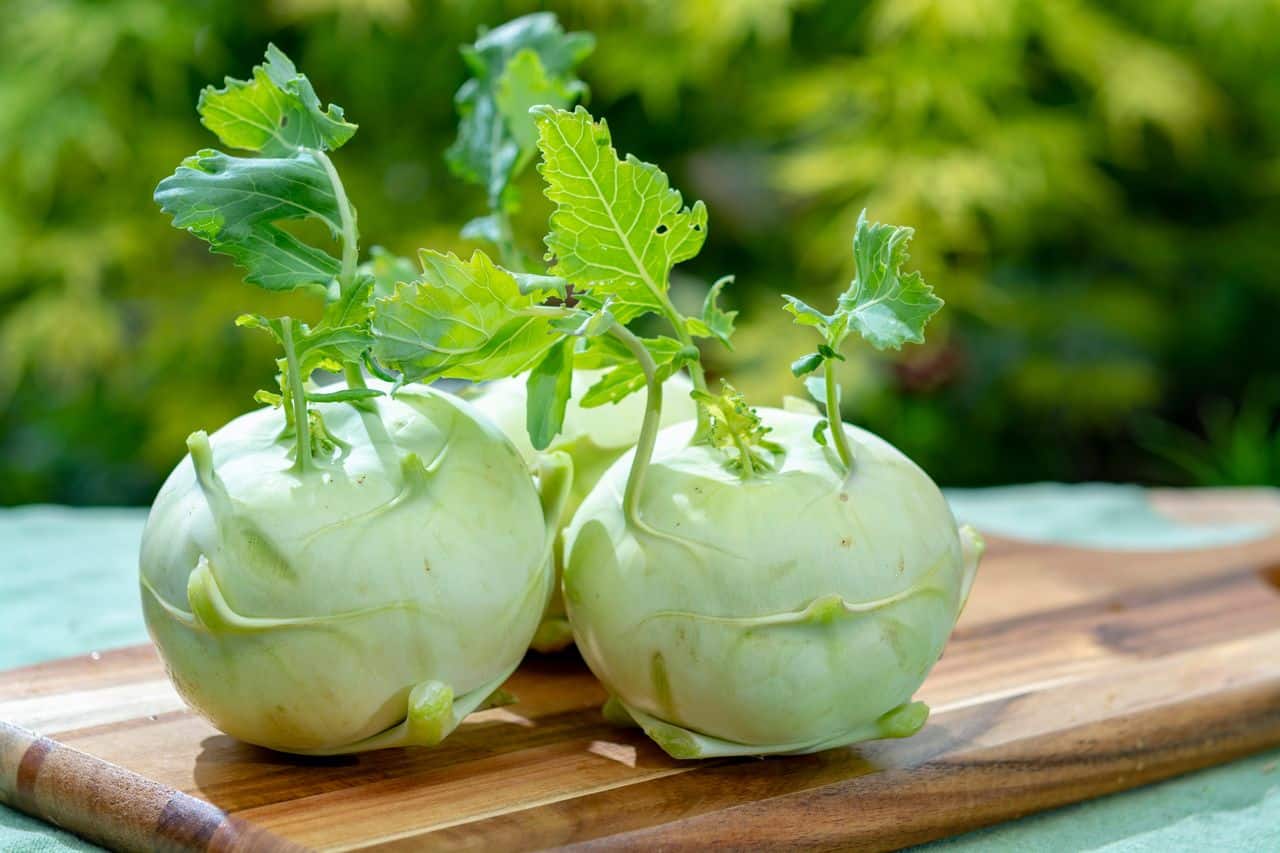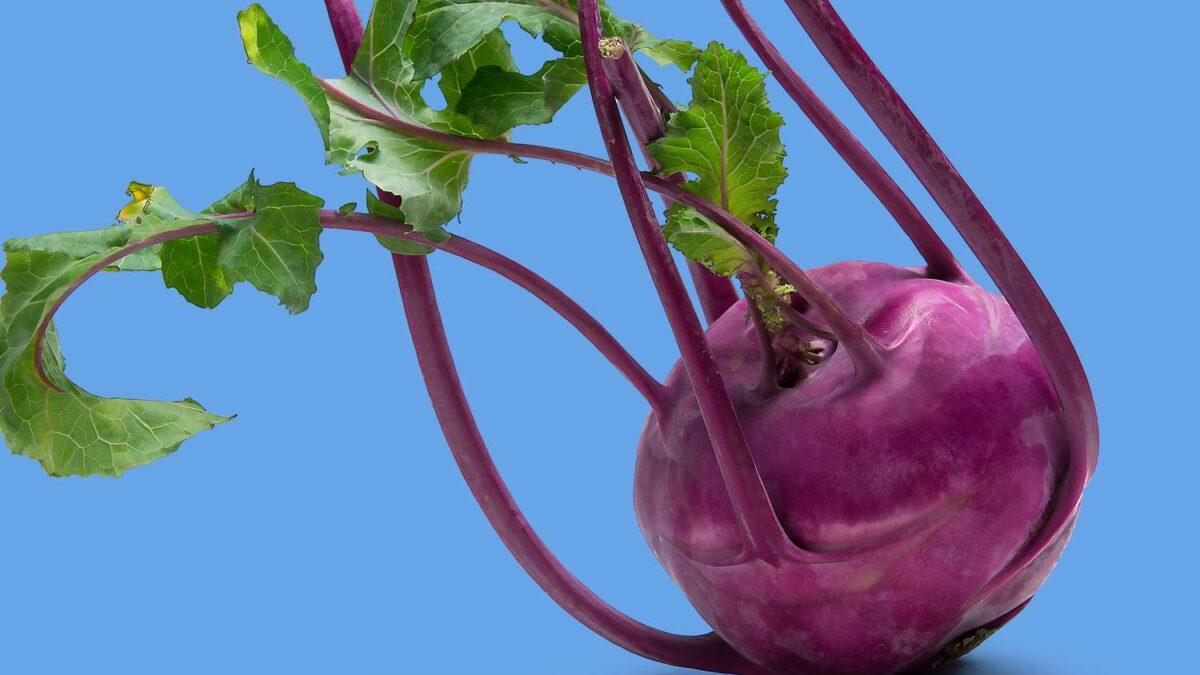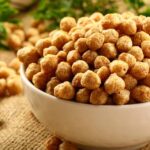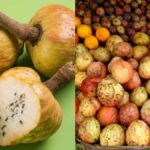Kohlrabi: Understanding The Unique Flavor, Nutrition, And Top Benefits
Kohlrabi: Understanding The Unique Flavor, Nutrition, And Top Benefits – Kohlrabi, also known as German Turnip, is a vegetable from the wild cabbage family (Brassica oleracea) that has gained popularity in recent years due to its numerous health advantages. Kohlrabi is a cultivar of the same species that produces cabbage, broccoli, cauliflower, kale, and Brussels sprouts. Kohlrabi, despite its pale green, circular blub-like look, is not a root vegetable or related to the turnip. In this article, we are discussing Kohlrabi: Understanding The Unique Flavor, Nutrition, And Top Benefits.

Kohlrabi is widespread throughout Europe and Asia. During the winter months, when it is in season, kohlrabi may be available at your local grocery shop or farmer’s market. Its unusual design makes it easy to recognize. Typically, it resembles a green onion bulb with several leaves protruding from it. However, it can also be purple.
Generally, Kohlrabi is a hardy vegetable and you can easily grow it yourself. For better outcomes, sow kohlrabi needs around three to four weeks before the last day of frost in the spring.
Kohlrabi an Overview
nukal vegetable is another name for Kohlrabi and is frequently referred to as the “German turnip,” is a distinct and versatile vegetable belonging to the Brassica family, which also includes broccoli, cabbage, kale, and Brussels sprouts.
Despite its name, the natural vegetable is a stem vegetable, defined by its bulbous, bloated stem. Furthermore, the bulb may be green, white, or purple, with huge, edible leaves resembling kale or collard greens on top.
The taste of Kohlrabi is like broccoli and cabbage with a hint of sweetness and the texture of the bulb is crisp and juicy, like radish and broccoli stem. It is rich in vitamin C, vitamin B6, potassium, and fiber. It’s also low in calories, making it an ideal choice for individuals trying to maintain a healthy lifestyle. Furthermore, nukal can be used in salads, slaws, soups, and stir-fries, providing culinary diversity. Its mild flavor and crunchy texture make it an ideal accompaniment to any meal.
Nutritional Profile of Kohlrabi
As we said above in the blog, Kohlrabi is packed with essential nutrients that make it a healthier choice and a good addition to your diet. Below we mention the nutritional content per 100 grams of nukal vegetable:
| Nutrient | Amount per 100 grams |
| Calories | 27 kCal |
| Carbohydrates | 6.2 g |
| Protein | 1.7 g |
| Calcium | 24 mg |
| Fibre | 3.6 g |
| Magnesium | 19 mg |
| Phosphorus | 46 mg |
| Potassium | 350 mg |
| Sodium | 20 mg |
| Folate | 16 µg |
| Beta Carotene | 22 µg |
| Vitamin C | 62 mg |
Moreover, adding kohlrabi to your diet regimen can lower the risk of heart attacks in younger and middle-aged women.
What are the Benefits of Kohlrabi?
Kohlrabi offers multiple health benefits if you add this vegetable to your daily diet. Below we mention a list of benefits of incorporating Kohlrabi into your meals:
High in Fiber
With 3.6 grams of fiber per 100 grams, this vegetable is rich in fiber content that promotes regular bowel motions and helps to prevent constipation. A high-fiber diet also aids in weight management by keeping you satisfied for a longer time.
Rich in Potassium
Kohlrabi contains 350 mg of potassium per 100 grams and helps manage blood pressure by balancing sodium levels in the body. In addition, potassium is necessary for healthy muscle and neuron function.
Low in Calories
With 27 kCal per 100 grams, this vegetable is an excellent choice for weight management. Furthermore, its low-calorie count mixed with high fiber content can assist in lowering overall calorie intake.
Supports Bone Health
As we said above Kohlrabi is rich in essential nutrients and minerals such as calcium 24 mg and phosphorus 46 mg per 100 grams, which are essential for strong and healthy bones. These minerals work together to support bone density and also help to prevent osteoporosis.
Contains Antioxidants
This vegetable contains a variety of antioxidants, including beta-carotene (22 µg). Antioxidants protect the body from oxidative stress and lower the risk of chronic diseases including heart disease and cancer.
Rich in Vitamin C
Kohlrabi is a good source of vitamin C, with around 62 milligrams per 100 grams. This strong antioxidant strengthens the immune system, promotes collagen formation for healthy skin, and improves iron absorption from plant-based diets.
Boosts Heart Health
Kohlrabi contains fiber, potassium, and antioxidants that promote heart health. Furthermore, fiber lowers cholesterol levels, whilst potassium promotes good blood pressure. Antioxidants suppress inflammation and protect against artery damage.
Provide Essential Nutrients
Kohlrabi provides vital minerals such as magnesium (19 mg) and folate (16 µg) per 100 grammes. Magnesium promotes muscle and nerve function, but folate is required for DNA synthesis and cell division, particularly during pregnancy.
Types of Kohlrabi
This vegetable is popular for its versatility and distinct flavor here we mention some types of kohlrabi and how they are used:
German kohlrabi – This is commonly used in creamy dishes or added to stews, reflecting it popularity in German cuisine.
Indian Knol-Khol – It is used in curries and stir-fries, often combined with spices such as turmeric, and mustard seeds.
Chinese kohlrabi – This variation is mostly used in Chinese cuisine and is sometimes pickled for added flavor in stir fries for a crisp texture.
Eastern European Varieties – Kohlrabi is frequently fermented or pickled in Eastern European countries, retaining its flavors and making it more useful in traditional cuisines.
Conclusion
Kohlrabi is a less famous vegetable than others, yet it may be found at several local farmers’ markets. It is a nutrient-dense plant, with edible leaves, stems, and bulbs that have a mild sweet, earthy flavor. Kohlrabi’s phytochemical composition has been shown in studies to be a powerful source of preventing cancer, diabetes, and high cholesterol while also improving liver and kidney function. It also improves heart health, reduces the risk of obesity, lowers blood pressure, and lowers C-reactive protein, all of which are beneficial to the heart. There are a variety of methods to incorporate this health-promoting vegetable into your diet. It can be cooked into stews, soups, salads, and stir-fry recipes, or eaten raw.
Frequently Asked Questions
Question 1 – How do you store kohlrabi?
Answer – You can this vegetable in refrigerators for up to 2 weeks separate leaves and store them in a plastic bag.
Question 2 – Can you eat kohlrabi leaves?
Answer – Yes, you can eat kohlrabi leaves as raw or can cook like other leafy vegetables.
Question 3 – Is kohlrabi good for weight loss?
Answer – Yes, kohlrabi are rich in fiber and low in calories which make it an ideal choice for weight management and healthy eating.





